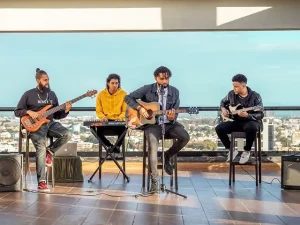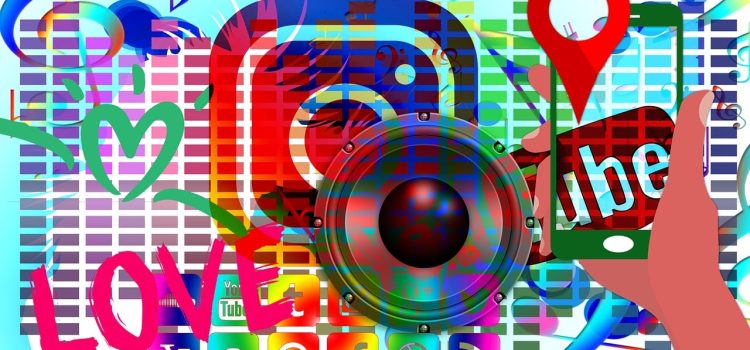
Introduction
In the digital age, social media has become an indispensable part of our daily lives, transforming the way we communicate, share information, and even consume entertainment. One of the most significant areas where social media has had a profound impact is the music industry. From shaping music trends to launching the careers of aspiring artists, social media platforms are now pivotal in determining what music resonates with the public. This article delves into the intricate role of social media in influencing music trends, exploring various platforms, mechanisms, and case studies that highlight its importance.
The Evolution of Music Consumption

-
Traditional Media vs. Social Media
Before the advent of the internet, music trends were primarily dictated by traditional media channels such as radio, television, and print magazines. These platforms had the power to decide which songs would become hits and which artists would rise to fame. However, the landscape began to shift with the rise of the internet and, more specifically, social media.
Social media platforms like Facebook, Twitter, Instagram, and TikTok have democratized the music industry, giving both established and emerging artists direct access to their audiences. Unlike traditional media, where gatekeepers controlled the narrative, social media allows for a more organic spread of music trends, driven by user engagement and viral content.
-
The Power of Algorithms
One of the key factors that set social media apart from traditional media is the use of algorithms. Platforms like YouTube and TikTok employ sophisticated algorithms to recommend content to users based on their preferences and behavior. This has a significant impact on music trends, as songs that align with a user’s taste are more likely to be promoted, increasing their chances of going viral.
Key Social Media Platforms Shaping Music Trends

-
YouTube
YouTube has long been a dominant force in the music industry. With over 2 billion logged-in monthly users, it serves as a primary platform for music discovery and consumption. The introduction of YouTube Music further solidified its role in shaping music trends. Artists can upload their music videos, live performances, and behind-the-scenes content, allowing them to connect with their audience on a personal level.
-
Instagram
Instagram’s visual-centric platform makes it ideal for artists to promote their music and engage with fans. Features like Stories, IGTV, and Reels provide multiple avenues for artists to share their content. The platform’s emphasis on visual storytelling allows artists to create a cohesive brand image, which can significantly influence music trends.
-
TikTok
TikTok has emerged as a game-changer in the music industry. The platform’s short-form video format and viral challenges have catapulted several songs to global fame. TikTok’s algorithm is particularly adept at promoting content that has the potential to go viral, making it a crucial platform for influencing music trends. Songs that become popular on TikTok often see a surge in streams on other platforms, demonstrating its far-reaching impact.
-
Twitter
Twitter serves as a real-time barometer for public opinion, making it a valuable tool for gauging music trends. Artists and fans alike use Twitter to share their thoughts on new releases, concerts, and industry news. Trending hashtags and viral tweets can significantly influence public perception and drive music trends.
Mechanisms of Influence

-
Virality and Memes
One of the most powerful mechanisms through which social media influences music trends is virality. A song that goes viral on social media can quickly become a global sensation. Memes and challenges often accompany viral songs, further amplifying their reach. For example, the “Harlem Shake” and “Old Town Road” became global phenomena largely due to their viral spread on social media.
-
User-Generated Content
User-generated content (UGC) plays a crucial role in shaping music trends. Platforms like TikTok and Instagram encourage users to create their own content using popular songs. This not only increases the song’s visibility but also creates a sense of community around it. UGC can take various forms, including dance challenges, lip-sync videos, and covers, all of which contribute to a song’s popularity.
-
Influencer Endorsements
Influencers wield significant power in shaping music trends. A single post or mention from a popular influencer can propel a song to new heights. Many artists collaborate with influencers to promote their music, leveraging their large followings to reach a broader audience. These collaborations can take various forms, from sponsored posts to exclusive previews of new releases.
Case Studies

-
Lil Nas X and “Old Town Road”
Lil Nas X’s “Old Town Road” is a quintessential example of how social media can influence music trends. The song initially gained traction on TikTok, where users created videos featuring the track. Its viral spread on the platform led to widespread recognition, eventually topping the Billboard Hot 100 chart for a record-breaking 19 weeks. This case study highlights the power of TikTok in shaping music trends and launching careers.
-
Billie Eilish
Billie Eilish’s rise to fame is another testament to the influence of social media. Eilish and her brother Finneas utilized platforms like SoundCloud and YouTube to share their music, gradually building a dedicated fanbase. Their strategic use of Instagram also helped create a unique brand image, resonating with a younger audience and influencing music trends in the alternative and pop genres.
Challenges and Criticisms

-
Over saturation
One of the challenges posed by social media is the over saturation of content. With millions of songs being uploaded daily, it can be challenging for artists to stand out. While algorithms help in curating content, they can also create echo chambers, limiting exposure to a diverse range of music.
-
Authenticity
The quest for virality can sometimes compromise the authenticity of music. Artists may feel pressured to create content that aligns with trending themes, rather than staying true to their artistic vision. This can lead to a homogenization of music trends, where originality takes a backseat to popularity.
Conclusion
Social media has undeniably transformed the music industry, playing a crucial role in shaping music trends. Platforms like YouTube, Instagram, TikTok, and Twitter offer artists unprecedented opportunities to connect with their audience, promote their music, and influence trends. While there are challenges and criticisms, the benefits of social media in democratizing the music industry and fostering creativity are undeniable. As technology continues to evolve, the role of social media in influencing music trends is likely to become even more significant, heralding a new era of musical innovation and discovery.










